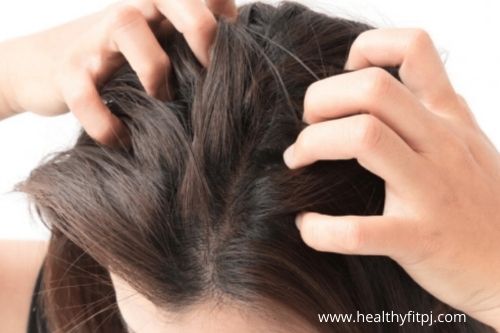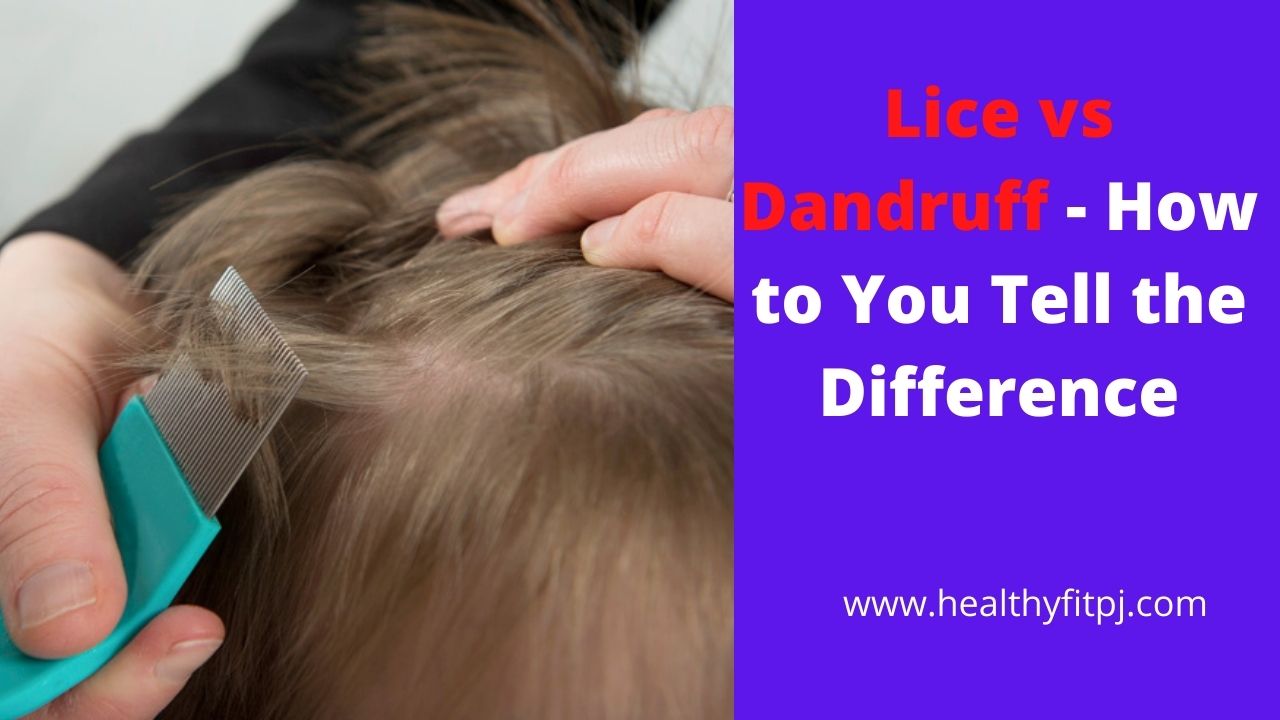Lice vs Dandruff : Lice and dandruff are both common and uncomfortable conditions that affect your scalp to itch, and they are easily confused with each other. Lice and dandruff have different causes and they require different treatment.
While lice are a temporary infection, and dandruff is a chronic skin condition. Head lice are contagious parasites that live and lay eggs on the scalp, they drink human blood and their bites cause serious itching.
Dandruff, also known as seborrheic dermatitis, which is a self-contained scalp condition that causes small pieces of dry skin to flake off of the scalp. When dandruff occurs on an infant’s scalp, it is known as cradle cap.
According to the Centers for Disease Control and Prevention (CDC), Every year around 6 to 12 million people in the United States get head lice. However, both lice and dandruff are usually treated safely and effectively at home.
Read the article till the end to learn the difference between Lice and Dandruff (lice vs dandruff), knowing the difference between them can help you to treat your scalp condition properly.
- Also Read : How to Get Rid of Beard Dandruff and What Causes it?
- Also Read : 11 Best Shampoos Without DMDM Hydantoin For Healthy Hair
Table of Contents
Lice vs Dandruff – What is Difference Between
Lice and dandruff can look similar, but they’re actually really different in many ways. Here are some important differences between lice and dandruff include:
- Location: Lice lay eggs called nits and dandruff causes flaky skin on the scalp. Both look similar but the close inspection reveals key differences. Nits stick to the base of the hair or on hair – not on the scalp, while dandruff is visible on the scalp. Since dandruff is just flaky or dry skin, it will be easy to remove as you brush your hair, but nits are actually a bit challenging to remove.
- Itching: Lice and dandruff both itch, dandruff tends to itch when the scalp is dry, and lice may feel a crawling sensation on your scalp.
- Contagion: Dandruff is not contagious; the dry skin flakes can get anyone but they do not spread person to person. The head lice, in other hand, can easily spread person to person either through direct head-to-head contact or by wearing a helmet or other headgear.
- Lymph nodes: Dandruff is not causing any infection, but lice can cause bacterial infections, especially when a person scratches their scalp too hard and causes bleeding. Some people with lice notice that the lymph nodes are behind their ears or on their neck.
- Color: Dandruff are white or perhaps a little yellowish, and lice are tiny, and you need magnifying glass to see them. If you have bugs or black or brown spots in the hair or on the scalp, then this usually means you have lice, not dandruff.
Causes of Lice and dandruff
The causes of lice and dandruff are different.
Lice
Lice are parasitic insects that spread to others through close contact. The lice can spread onto:
- Head-to-head contact
- Wear clothes
- Bedding
- Towels
- Using personal things like hats, combs and other hair accessories
Dandruff
Dandruff is a non contagious, noninflammatory skin condition. It is like dry skin or oily skin, skin yeast, and certain genetic factors that cause dandruff.
Symptoms of Lice and Dandruff

Here are symptoms of lice and dandruff.
Symptoms of Lice
Lice are more common among children and people in close contact with children. The main symptom of lice is intense itching and crawling sensation, children may describe this sensation as tickling in their hair.
Here are some signs and symptoms of lice includes:
- Intense itching on the scalp
- People may constantly scratch their head
- Bloody or red spots on the scalp from scratching
- Swollen lymph nodes
- Tiny black spots on the scalp
- Lice eggs on the hair (teardrop-shaped lice eggs)
- Trouble sleeping
- Crawling or tickling on the scalp
Symptoms of Dandruff
Few people with dandruff develop seborrheic dermatitis on other areas of their body. If this happens, people may notice flaking skin on the face, neck, ears or chest. These areas may be red, dry, itchy or even painful.
Dandruff also is itchy like lice, but it is not as intense itchy as the itching caused by lice. When you have dandruff, your scalp may feel either very dry or very oily.
However, here are some main symptoms of dandruff includes:
- Itchy scalp
- Flaky skin that is very oily or very dry
- White or yellow flakes on scalp, hair, clothes, or even shoulders
- Red patches on the scalp
- Red or pink skin from itching
- Symptoms worsen during winter or dry or cold weather
How to Treat Lice?
First you need to check all members of your house if someone has lice or not, if you share the same bed or you’re close to them, then lice may transfer easily. So, here are some tips that you can treat lice at home.
Shampoo
The best prescription shampoo can kill lice. It is also important to comb the nits out of the hair. People should follow the procedure according to the shampoo package directions.
To apply medicated shampoo, you should:
- Apply the medicated shampoo according to instructions on the box. Also, you may need two bottles if you have long hair.
- Comb your hair to remove dead and live lice using a fine-tooth comb.
- Remember to remove clothing that may become wet during processes.
Medications
Over-the-counter (OTC)lice remedies or prescription medications work well. If the first treatment does not work well, then you should talk with the doctor for an alternative remedy.
Home Treatment
A Lice requires a bit more work around your house to ensure that all of the tiny insects and their eggs are destroyed.
Here are some recommendations by Centers for Disease and Prevention (CDC).
- Washing bed sheets, clothes, towels and other items in very hot water and dry them on a high heat setting.
- Vacuuming all carpets and rugs in the home for at least 1 week.
- Avoid using insecticidal sprays or any other poisons.
How to Treat Dandruff?
Dandruff can also be treated at home with over-the-counter (OTC) shampoo. You can purchase these shampoos in local drugstores or online.
Start by using shampoo twice per week with an anti-dandruff shampoo. If the dandruff shampoo in contact with your hair for five to ten minutes is most effective. Washing your hair more frequently also helps dandruff or treat fungal infections that might lead to skin flaking.
Few people may find that their dandruff does not get better with an anti-dandruff shampoo. If symptoms do not improve with anti-dandruff shampoo, then flakes may be due to a yeast infection on the scalp.
In this case, you should see a dermatologist or doctor for better treatment.
FAQs On Lice vs Dandruff
-
Can Dandruff Lead to Lice?
The short answer is NO, dandruff does not lead to lice. Lice are parasites that are easy to differentiate from dandruff. Lice love your blood and they feed on it.
-
How Big is Lice vs Dandruff?
Lice and dandruff are both extremely small in size, and it can be tough to identify them apart. Lice are about the size of a sesame seed and their eggs are even smaller. But dandruff flakes are bigger than lice and often appear and feel greasy.
The Final Thoughts
Lice vs dandruff; if you have found yourself scratching your head often, then take a closer look. Dandruff will appear as white or yellow flakes of dry skin, and lice eggs look like tiny yellow or white eggs in the shape of a teardrop on the hair.
However, having lice or dandruff can be dangerous, often scratching can injure your scalp and may lead to scalp infections.
So, both lice and dandruff respond well to anti-dandruff shampoo treatment and also can try an OTC remedy. If the OTC treatment does not work, then it is best to see a doctor for scalp itching or scalp pain.
Hopefully, you like this article, if you have any questions and suggestions kindly put them in the comment box below.
Note: this post is for educational and informational purposes only, and does not provide treatment and medical advice.
You’ll also like:
